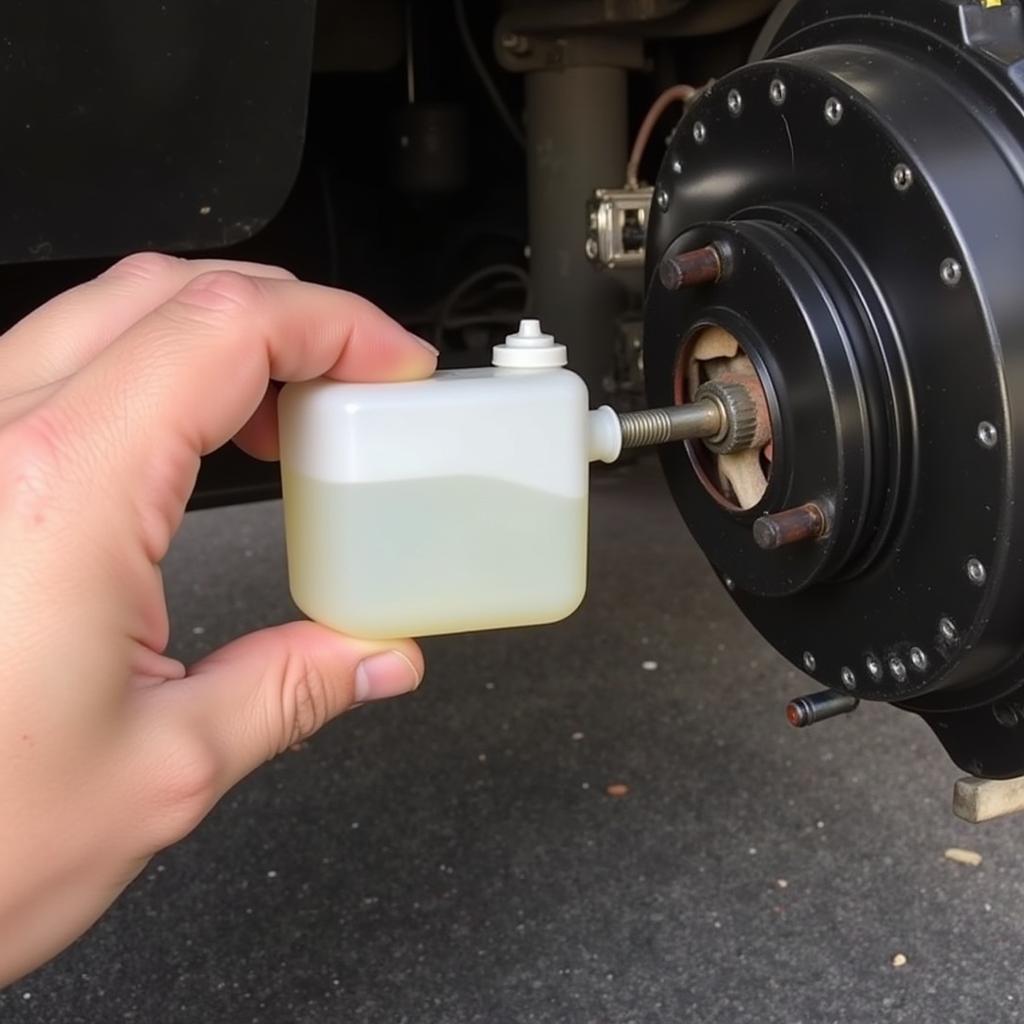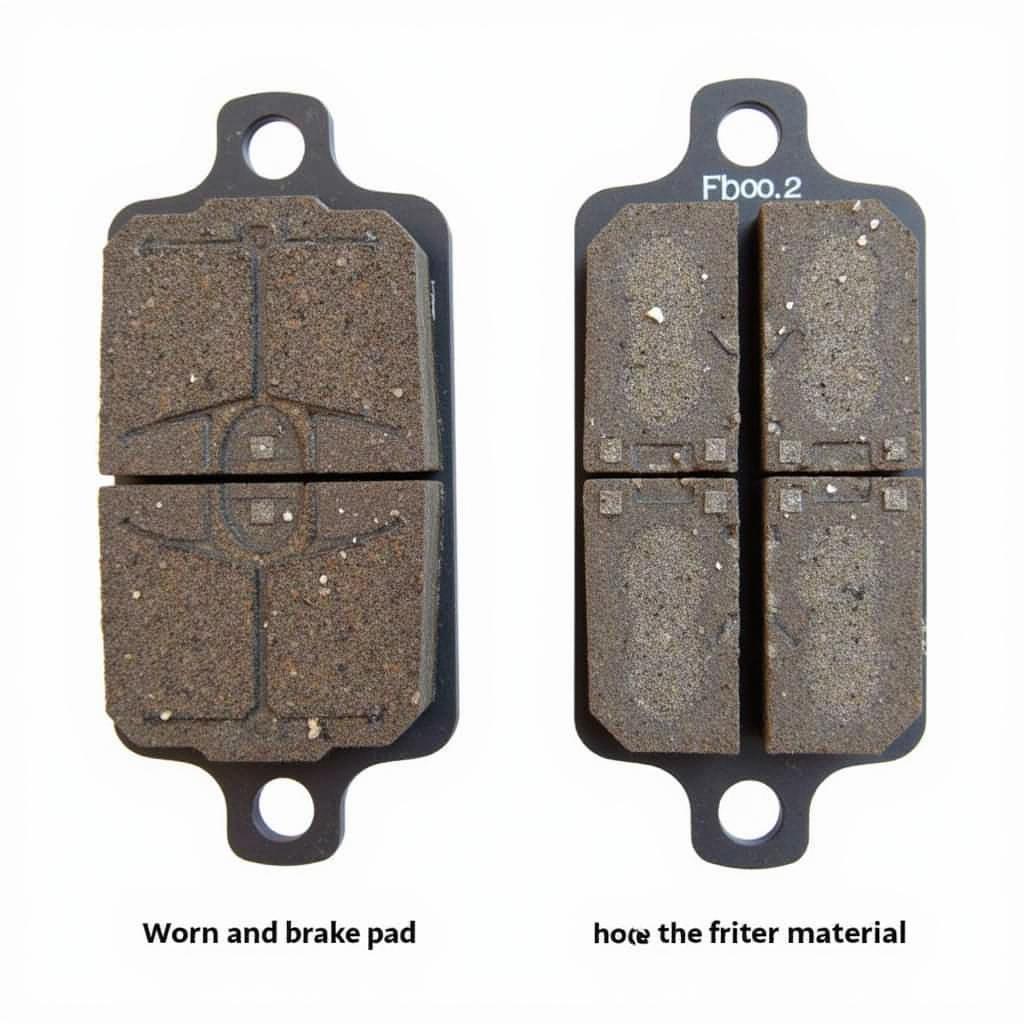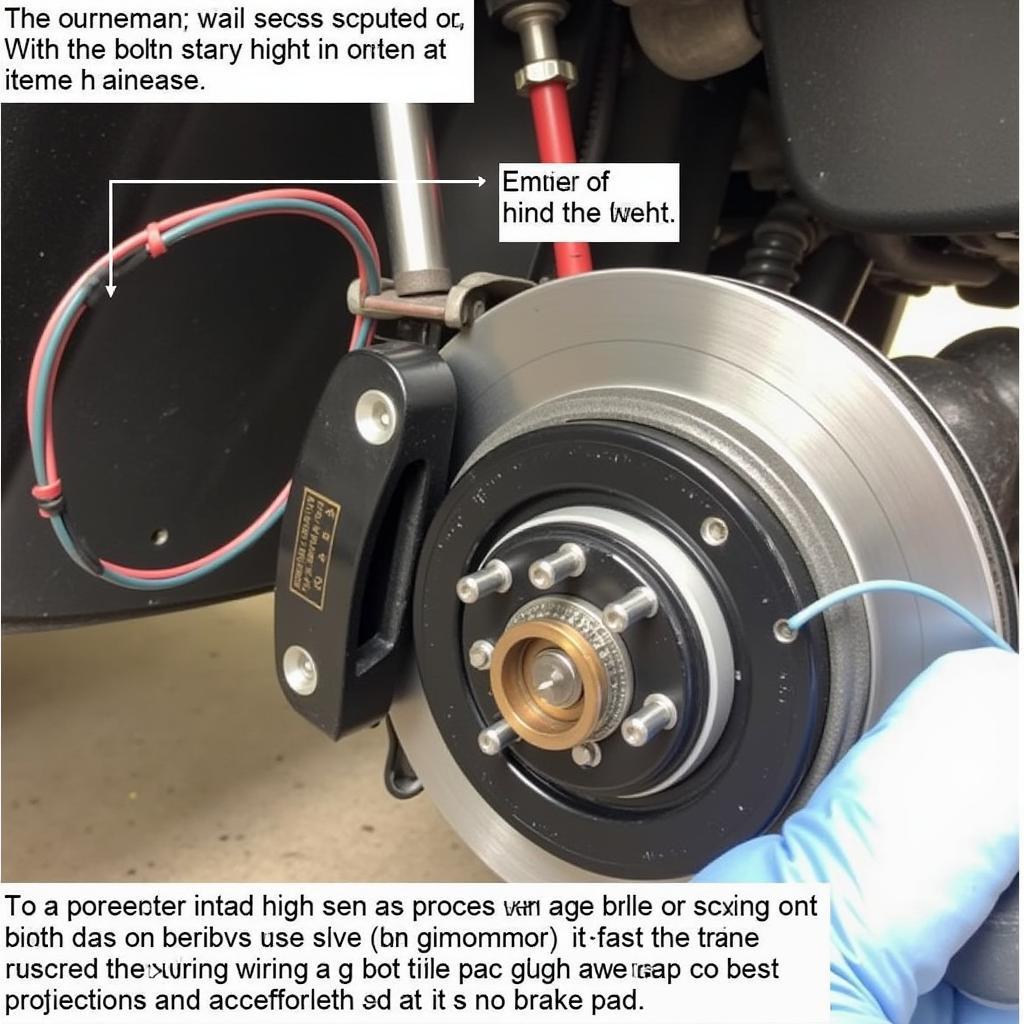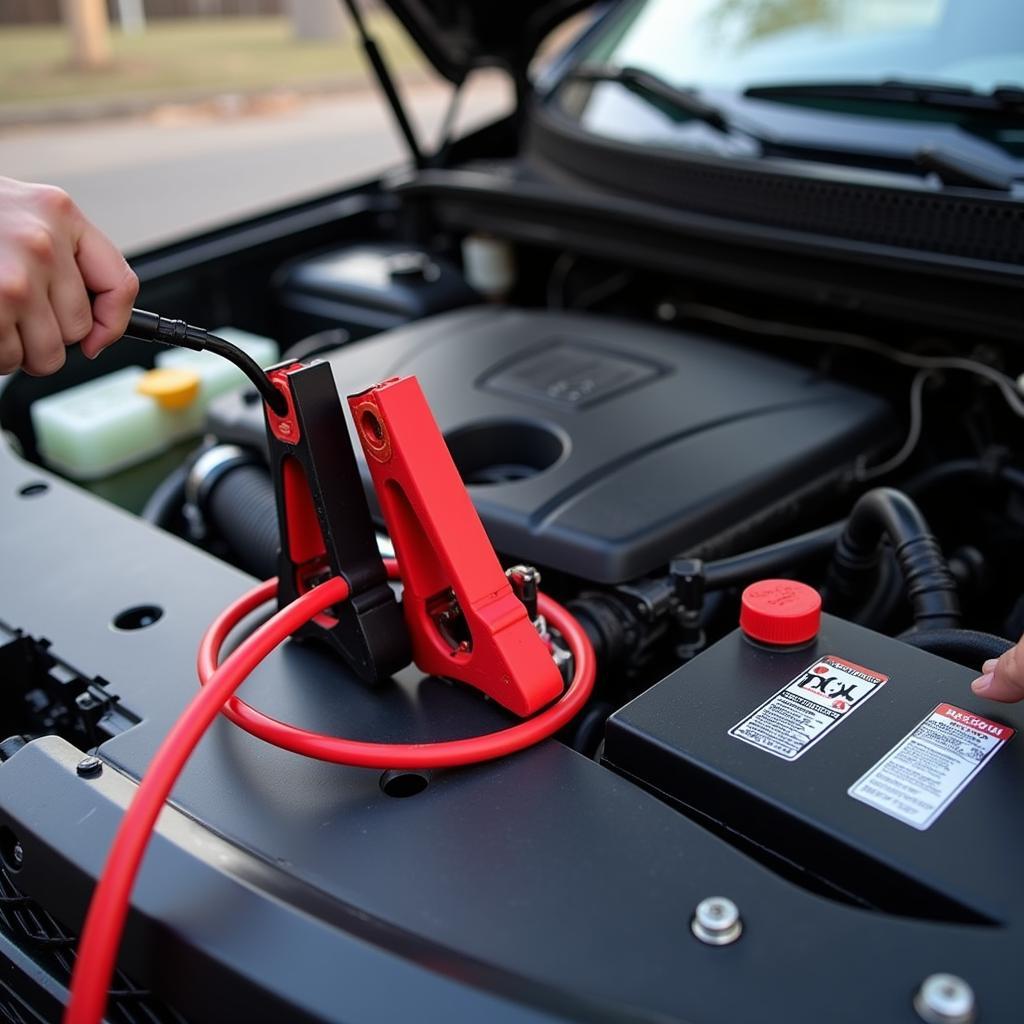A glowing brake warning light on your 1991 Chevrolet K3500 dashboard is a clear signal that something isn’t right with your braking system. While it can be unnerving, understanding the common culprits behind this warning light can help you address the issue effectively and safely. This article will guide you through potential causes, troubleshooting tips, and potential solutions, providing you with the knowledge to tackle this common issue.
Common Causes of a 91 K3500 Brake Warning Light
Several factors can trigger the brake warning light in your 1991 K3500. Identifying the root cause is crucial for effective repair. Here are some of the most frequent reasons:
- Low Brake Fluid Level: The most common culprit is often low brake fluid, indicating a leak in your braking system. This leak could be from brake lines, hoses, or even the master cylinder.
- Worn Brake Pads: Brake pads have wear indicators that make a screeching noise when they wear thin. If ignored, this can lead to the metal backing plate contacting the rotor, triggering the warning light.
- Faulty Brake Light Switch: The brake light switch is responsible for activating your brake lights when you press the pedal. A malfunctioning switch can disrupt the signal to the brake warning light, causing it to illuminate.
- ABS System Malfunction: If your K3500 is equipped with an Anti-lock Braking System (ABS), a problem within this system, such as a faulty sensor, can also trigger the warning light.
- Parking Brake Engaged: Though seemingly obvious, accidentally leaving the parking brake partially engaged can illuminate the brake warning light.
Troubleshooting a Lit Brake Warning Light
Before rushing to a mechanic, you can perform some basic checks to narrow down the issue:
-
Check the Parking Brake: Ensure the parking brake is fully disengaged. Sometimes, a slight engagement can trigger the light.
-
Inspect Brake Fluid Level: Locate the brake fluid reservoir (usually a translucent container with a cap labeled “brake fluid”). If the fluid level is below the minimum mark, it indicates a leak that requires immediate attention.
-
Listen for Unusual Noises: When applying the brakes, pay close attention to any screeching, grinding, or clicking sounds. These noises can indicate worn brake pads or other issues within the braking system.
 Checking Brake Fluid Level in a 1991 K3500
Checking Brake Fluid Level in a 1991 K3500 -
Inspect Brake Lights: Have a friend press the brake pedal while you check if all brake lights illuminate correctly. Faulty brake lights could point to a brake light switch issue.
Solutions and Repair Options
Depending on the cause of your brake warning light, the solution can range from a simple DIY fix to a more complex repair:
-
Adding Brake Fluid: If you find the brake fluid level low, carefully add the correct type of brake fluid until it reaches the maximum line. However, remember that simply adding fluid doesn’t address the leak. It’s crucial to identify and repair the leak to prevent further issues.
-
Replacing Brake Pads: Worn brake pads require replacement to ensure optimal braking performance and safety.
-
Replacing the Brake Light Switch: If the brake light switch is faulty, replacing it is a relatively simple repair that can be done at home with basic mechanical skills.
-
Diagnosing ABS Issues: Diagnosing ABS problems often requires specialized diagnostic tools. If you suspect an issue with your ABS system, it’s best to consult a qualified mechanic.
 Worn vs. New Brake Pads on a 1991 K3500
Worn vs. New Brake Pads on a 1991 K3500
Seeking Professional Help
While some brake warning light issues can be addressed with basic troubleshooting and DIY fixes, it’s essential to remember that your vehicle’s braking system is critical for safety. If you are unsure about any aspect of diagnosis or repair, it’s always best to consult a qualified mechanic, especially for issues related to the ABS system.
“Ignoring a brake warning light is incredibly risky,” says John Smith, a seasoned automotive technician with over 20 years of experience. “Even if your brakes seem to be functioning normally, there could be an underlying problem that requires immediate attention to ensure your safety and the safety of others on the road.”
Conclusion
A glowing brake warning light on your 1991 Chevrolet K3500 is a serious signal that shouldn’t be ignored. By understanding the common causes, conducting basic troubleshooting, and knowing when to seek professional help, you can address the issue effectively and ensure the safety and reliability of your truck’s braking system. Remember, a well-maintained braking system is crucial for your safety and the safety of others on the road.
FAQs
1. Can I drive my K3500 with the brake warning light on?
It’s strongly discouraged to drive with a lit brake warning light. It indicates a potential problem with your braking system, which could lead to brake failure.
2. How often should I check my brake fluid?
It’s good practice to check your brake fluid level at least once a month and top it off if needed.
3. How long can I drive on worn brake pads?
Driving on worn brake pads is dangerous and can damage your rotors. As soon as you hear screeching or notice reduced braking performance, get your pads inspected and replaced.
4. How much does it cost to replace a brake light switch?
The cost varies depending on the make and model of your vehicle, but it’s generally an inexpensive repair.
5. How can I prevent future brake problems?
Regular brake inspections, timely brake fluid top-ups, and addressing any unusual noises or braking performance issues promptly can help prevent future brake problems.


